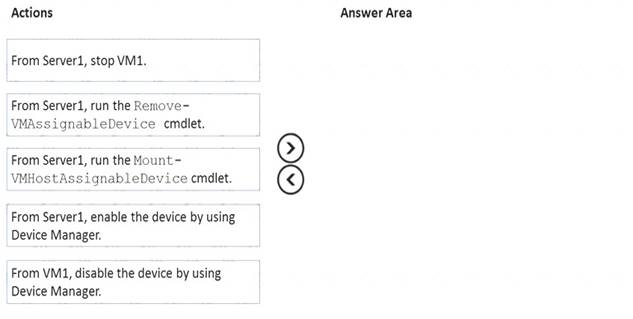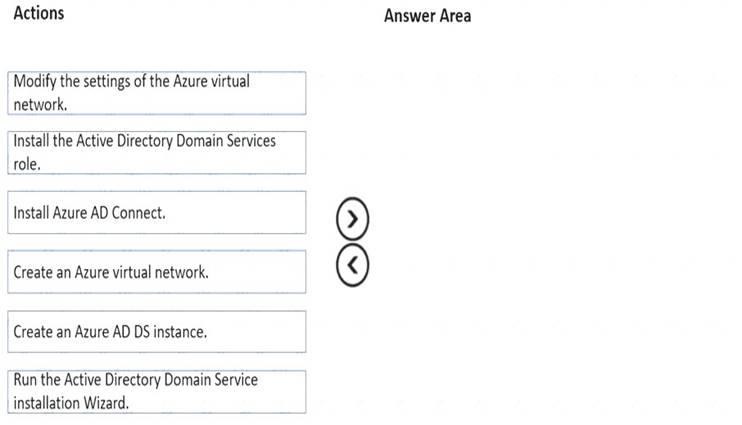- (Exam Topic 3)
Your network contains an on-premises Active Directory Domain Services (AD DS) domain named contoso.com The domain contains three servers that run Windows Server and have the Hyper-V server rote installed. Each server has a Switch Embedded Teaming (SET) team
You need to verity that Remote Direct Memory Access (RDMA) and all the required Windows Server settings are configured properly on each server.
What should you use?
Correct Answer:
B
Reference: https://github.com/Microsoft/Validate-DCB
- (Exam Topic 3)
You have a server named Server1 that runs Windows Server and has the Hyper V server role installed. Server1 hosts a virtual machine named VM1.
Server1 has an NVMe storage device. The device is currently assigned to VM1 by using Discrete Device Assignment.
You need to make the device available to Server1.
Which four actions should you perform in sequence? To answer, move the appropriate actions from the list of actions to the answer area and arrange them in the correct order.
Solution:
Graphical user interface, application Description automatically generated
Reference:
https://docs.microsoft.com/en-us/windows-server/virtualization/hyper-v/deploy/deploying-storage-devices-using
Does this meet the goal?
Correct Answer:
A
- (Exam Topic 3)
You have a server named Server1 that runs Windows Server. You plan to host applications in Windows containers.
You need to configure Server1 to run containers. What should you install?
Correct Answer:
C
- (Exam Topic 3)
You have on-premises file servers that run Windows Server as shown in the following table.
You have the Azure file shares shown in the following table.
You add a Storage Sync Service named Sync1 and an Azure File Sync sync group named Group1. Group1 uses share1 as a cloud endpoint.
You register Server1 and Server2 with Sync1. You add D:Folder1 from Server1 as a server endpoint in Group1.
For each of the following statements, select Yes if the statement is true. Otherwise, select No. NOTE: Each correct selection is worth one point.
Solution:
Graphical user interface, text, application, email Description automatically generated
Reference:
https://docs.microsoft.com/en-us/azure/storage/file-sync/file-sync-planning
Does this meet the goal?
Correct Answer:
A
- (Exam Topic 2)
You need to implement a name resolution solution that meets the networking requirements. Which two actions should you perform? Each correct answer presents part of the solution.
NOTE: Each correct selection is worth one point
Correct Answer:
DF
Virtual machines in an Azure virtual network receive their DNS configuration from the DNS settings configured on the virtual network. You need to configure the Azure virtual network to use DC3 as the DNS server. Then all virtual machines in the virtual network will use DC3 and their DNS server.

